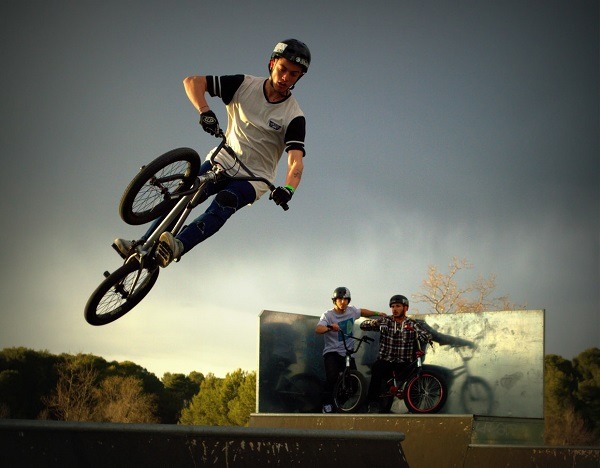BMX bikes come in three different types, and choosing the right one for you can be challenging. However, there are some crucial questions that you can ask yourself to help you make a wise decision.
When choosing, ask yourself these questions:
- Are you riding to race?
- Do you need lightweight parts and frames?
- Are you going to ride on the streets or in the dirt?
- Are you going to play in a local skatepark, or will you be using some backyard ramps?
These simple questions will provide you with a good idea about where you will ride and what type of BMX bike you need. Thus, helping you to get the right bike.
You might be wondering what’s the difference between these types of bikes when they look virtually the same? There are three types of BMX bikes:
- Dirt jumper or jump bike
- Freestyle bike
- True BMX bike
So, what are the differences between these bikes? Read on and you will know more.
Dirt jumper
As its name goes, dirt jumpers or simply jumpers are built to be punished with high-flying stunts. It is thicker than the regular BMX bike but lighter than the freestylers.
Jumper normally doesn’t have front brakes, and its wheels typically have 36 rugged 13-gauge spokes instead of 48 spokes that the freestyle bike’s wheel has. They are sometimes equipped with 24-inch wheels to accommodate larger riders. Moreover, its tire has the greatest number of threads compared to other BMX bike types.
Freestyle
Freestylers emerged shortly after BMX bikes. These bikes are made for aggressive street riding and flatland tricks rather than racing. It is also the best choice if you need something that you can use to roam around the city.
The build of this bike focuses on sturdiness rather than being lightweight. The freestyler wheels are usually either mag wheels made from strong nylon or 48 wire spokes for heavy-duty models. Its tires are at least 20×2.125, with adequately smooth treads, since they normally run on pavements.
Freestyle bikes come with rear and front brakes, where the front cable is routed via a detangler or rotor, allowing the handlebars to turn completely around while tangling the cables. Be sure to check out BMX Adelaide for great options.
True BMX
The True BMX bike, the father of all BMX bikes, emerged in the late 60s. They were merely imitations of motocross motorcycles, designed for racing around berms and over jumps in the dirt. Shortly after, many kids had them, regardless of how they wanted to use them.
The True BMX bikes are still built to race. However, you don’t have to be on a race to fully enjoy this bike. These bikes usually have 20-inch wheels, knobby tires, small saddles, upright handlebars with crossbars, rear hand brakes, and long cranks. Its frame is sturdy and light. The lighter the bike gets, the more expensive it becomes.
Knowing your purpose of riding a BMX bike makes it easier for you to choose and decide which type suits you. Also, it is crucial to know that the frame of these bikes comes in different materials with different attributes that can give you the advantage of weight, strength, and price.
Lastly, it is crucial that you choose a bike model according to your size, weight, and skills and don’t forget to wear the appropriate safety gear before riding your BMX bike.
Author: Alison Lurie

